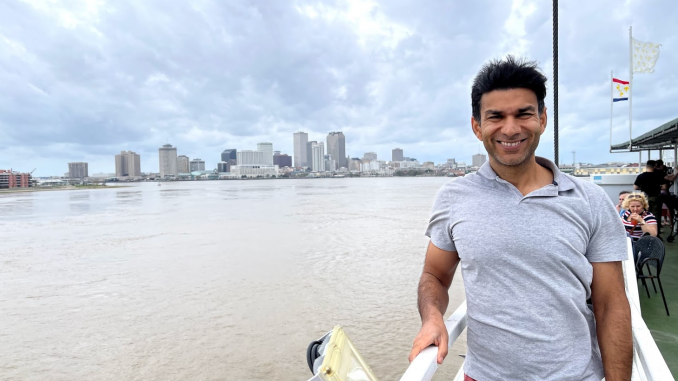
Jessica and I spent 3 days in New Orleans from Mar 12-15 2021. I booked a vacation package from SouthWest airlines including airfare and 3 night hotel stay for two for just a bit more than 1100$. We left DCA around 7PM on Mar 12 and arrived in New Orleans Louis Armstrong International airport around 10 PM after a short layover in Nashville. The flight was uneventful except a small medical emergency I experienced while deplaning in New Orleans. Shortly before arrival in New Orleans, I started feeling uneasy in the stomach. After the plane landed, I got up to retrieve my luggage from the overhead bin and immediately felt lightheaded and weak. I must have passed out shortly afterwards, because the next thing I remember is a passenger on the plane (who was a doctor) helping me up on a nearby seat and asking me if I was ok. I still felt weak and a bit sick in the stomach, and just wanted to put my head down on the tray table. He took my pulse, offered me some water and asked me if I had any health conditions. I had a few sips of water and after resting for a minute or two, I started feeling much better. I apologized to people gathered around me for causing inconvenience and tried to get up, but the airlines staff got me a wheel chair out of abundance of caution. After being wheeled out of the airplane, a team of airport medical staff pricked my finger to check my blood sugar level and took my blood pressure. My blood sugar was fine, but the blood pressure was slightly on the lower side (though still in the normal range). My resting heart rate was 56, which is normal for me. They asked me if I had any heart condition or was on any medication. I replied that I had neither, and consider myself to be in excellent health. I suspected that my stomach discomfort was caused by the chicken nuggets I ate at the Nashville airport. By this time I was feeling a lot better and told the medical staff that I felt well enough to walk out of the airport on my own. They had even brought in a stretcher and were ready to take me to the hospital. It is impossible to say for sure, but I’m certain that the episode was caused by the chicken nuggets I ate at the Nashville airport. I also had a glass of wine and a yogurt, which likely didn’t sit well with my stomach.
From the airport, we took a taxi to our hotel, Hilton riverside. The 16 mile ride cost us ~$35 and took roughly half hour. The hotel is located in the central business district of New Orleans on the north bank of the Mississippi river. We got a nice view of the river from the room window. The central business district of New Orleans, where several of the city’s hotel and casino chains are located, is nestled in between many popular neighborhoods – the French Quarter, Garden District, Irish Channel etc. It is a convenient location to stay.
Table of Contents
Brief history of New Orleans
New Orleans was founded in the spring of 1718 by the French Mississippi Company, under the direction of Jean-Baptiste Le Moyne de Bienville. The French colony of Louisiana was ceded to the Spanish Empire in the Treaty of Fontainebleau in 1762. Interetingly, the Treaty of Fontainebleau was a secret agreement the terms of which were fully revealed only in 1964. This came as a surprise to the residents of New Orleans, who suddenly found their city under Spanish rule did not easily accept it. They rebelled and even sent a delegation in protest to the Louis XV, the king of France. All to no avail. In 1963, following its defeat by Britain in the 7 year war, France further ceded eastern half of Louisiana (east of the Mississippi) to Great Britain. This, along with the loss of Canada to Britain, nearly ended French colonial possessions in North America. As an aside, I’m realizing more and more the importance of the 7 year war in shaping the future destiny of North America. While the British prevailed in the 7 year war and gained much territory, the victory came at a severe cost in life and treasure and bankrupted the British treasury. The British tried to raise revenue by increasing taxation on the American colonists, which eventually led to the American Revolution. During the American Revolutionary War, New Orleans was an important port for smuggling aid to the American revolutionaries, and transporting military equipment and supplies up the Mississippi River.
While nominally the ruling power, Spain was largely a benign absentee landlord administering the Louisiana territory from Havana, Cuba, and contracting out governing to people from many nationalities as long as they swore allegiance to Spain. While Spanish officially was the only language of government, the majority of the populace continued to speak French.
Following the French Revolution, Napolean seized power in 1799. Napolean wanted to rebuild France’s New World empire. in 1801, France and Spain negotiated a retrocession of Louisiana back to France, in return for some territories in Tuscony. However, following his failure to crush a revolt in Haiti and prospect of renewed hostilities with Britain, Napolean abandoned his plans. France transferred New Orleans and the surrounding area to the United States pursuant to the Louisiana Purchase for 15 million dollars in 1803. Besides doubling its territory, the Louisiana purchase was also a major foreign policy win for the young United States, which was eager to avoid a resurgent France controlling a major shipping port on its southern border.
As a result of this complex history, the population of New Orleans is a mix of ethnic Europeans, descendants of African slaves and native indians.
Day 1
Walking tour
On Saturday morning (our first full day), we did a walking tour of the French Quarter, focused on the architectural history of that part of the city. Our tour guide, an arts history major had been living in New Orleans for several years. Her training in art history was evident in her ability to use specific architectural terms to describe building parts. She’d point at a building and say – “look at the front gabled roof and hipped projecting overhang on this house”, or “the lintel on this door is made from cypress trees”. I learnt several building part names from the tour. Two that have stuck with me are: Cornice – a fancy word for the detail at the edge of a building where the roof meets the walls. On most houses, it includes the soffit and the fascia; and Lintel – a horizontal support of timber, stone, concrete, or steel across the top of a door or window.
Here are a few more points that have stuck with me, followed by a few annotated pictures from the walking tour
- Gallery vs. Balcony: A Balcony is a narrow platform projecting outwards from the wall of a building. Balconies can be small and boxy or stretch the length of the building. A Gallery is wider than a balcony. Most galleries overhang the width of the sidewalk, and are supported by posts/columns reaching to the ground. Houses in New Orleans are known for galleries with ornamental railings.
- Shotgun houses: These were built in the 19th century on small plots of land with efficiency in mind and gained popularity in the African American communities of New Orleans and other Southern cities like Charlotte and North Carolina. Shotgun houses are usually one room, or about 12 feet wide, and three or four rooms deep. The front door leads directly into the living room, then there are one or two bedrooms, followed by a kitchen in the back. There are no hallways, so it’s necessary to walk through one room to get to the next. All of the doors line up, providing a welcome breeze in the warm Southern climates. shotgun houses got their name due to their linear design—theoretically a bullet shot through the front door could exit the back door without hitting anything. Others speculate the word “shotgun” is derived from the Yoruba word togun, meaning “house” or “gathering place.”
- Vieux Carre Commission: Instituted by law to protect, preserve and maintain the distinctive architectural, historic character of the “Vieux Carre” (French Quarter) by regulating all repairs, alterations and construction that affect any building element exposed to outside air.
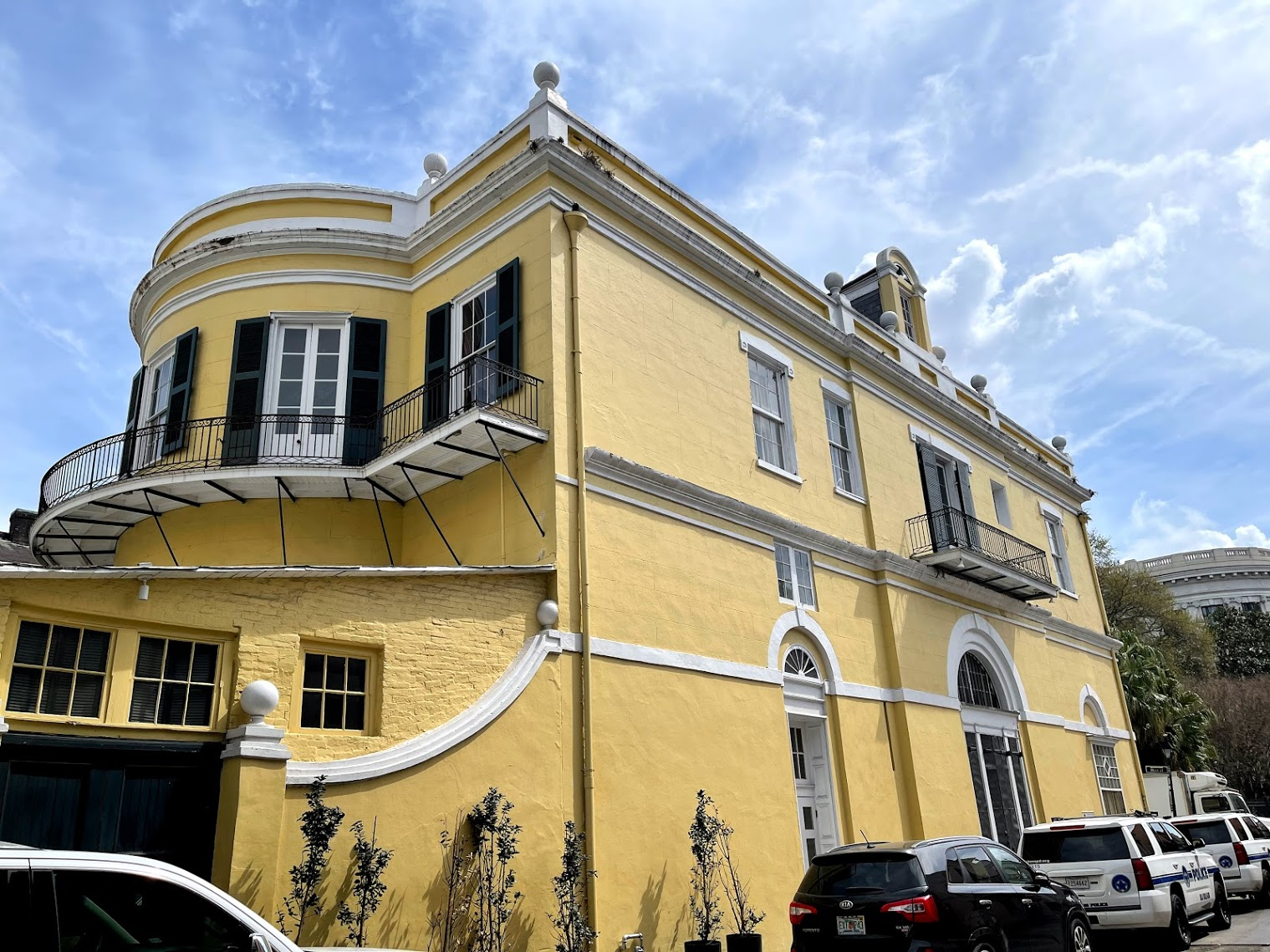
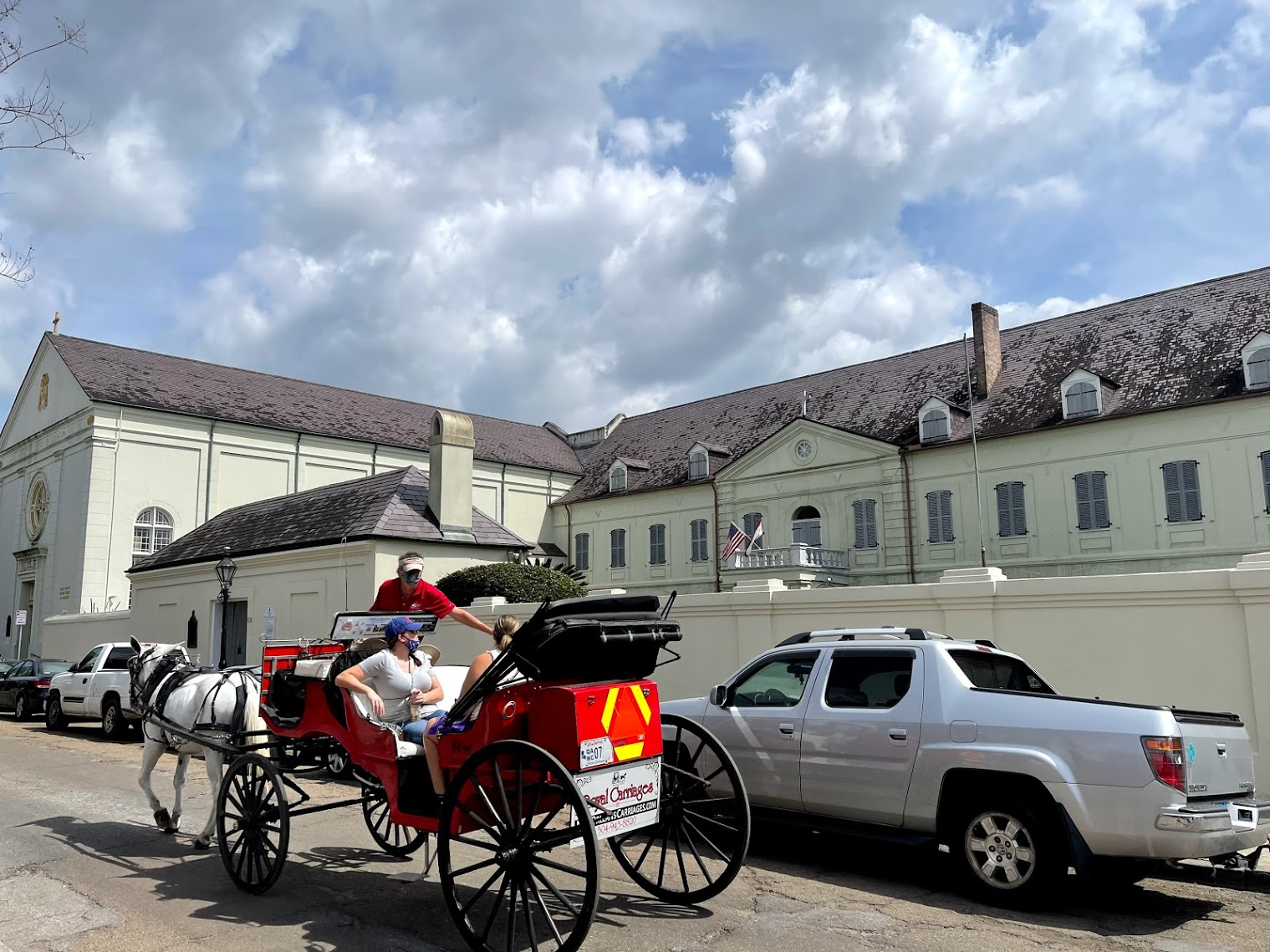
After the walking tour, we had lunch at Antoine’s, a nice French style restaurant.
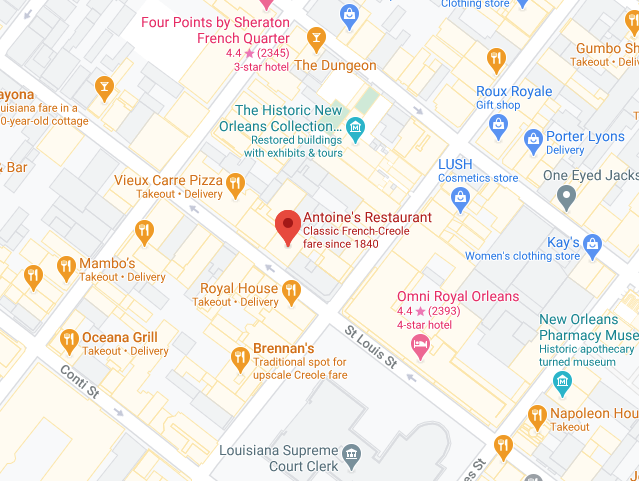
The restaurant is known for a 3 course lunch priced at the last two digits of the current year. So our three course lunch (not including a drink) cost us $21.
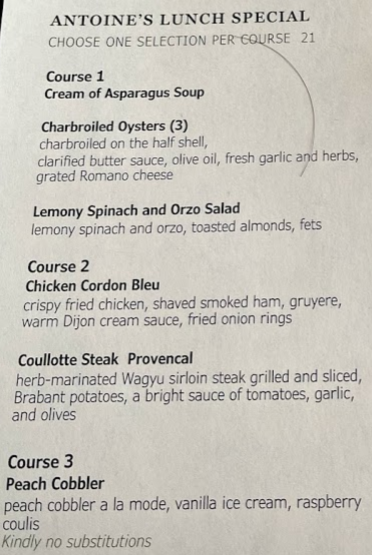
The food was ok, but the ambiance is nice and I recommend trying it. After lunch, we took a walk along the Mississippi river to Crescent park. Along the way, we walked through the “shops of the colonnade” open air market which includes five blocks of local produce, specialty art, handmade crafts, retail shopping. The temperature was in the mid 70’s and the cool breeze blowing off the river was refreshing. The frequent tankers and cargo ships plying on the Missisipi provide an interesting contrast to the historical charms of the city. There is also a high pedestrian crossing bridge near crescent park, that provides a nice vantage point for taking pictures of the river and city skyline.
French Quarter was teeming with tourists. We saw several groups of spring breakers and many St. Patrick’s day (Mar 17) celebrations. Mask wearing and social distancing wasn’t being taken very seriously.
After resting for a bit in our hotel and giving our weary legs some rest, we had dinner at Giana, a nice Italian restaurant a 10 min walk from the hotel. The ambiance and food were great. We had a dish involving a pasta called Fregula which I hadn’t tried before and really liked. After dinner, we walked along Magazine street to the Lower Garden district, on the other side of the Pontchartrain expressway and had drinks at a local wine bar.
Day 2
The next day, we had two activities planned – a boat ride along the Mississippi from 11 AM to 1:30 PM and a swamp tour along the Pearl river starting at 2:45 PM. The swamp tour starting location was a 40 min drive from the hotel, so we decided to rent a car. All the car rental locations near our hotel were booked, so I ended up taking an Uber to an Enterprise rental in Gretna, a neighborhood about 3 miles away from the hotel on the other side of Mississippi. Upon arriving at the rental location, I found that no small and medium size cars were available and ended up with a huge Dodge truck.
Mississippi river boat ride
We learnt some interesting information about the Mississippi on the boat ride. The Mississippi is the fourth longest river (after Amazon, Nile and Yangtze) and fifteenth-largest river by discharge in the world (we were told it is the third longest on the tour, but Yangtze is longer by a few kilometres according to Wikipedia). The deepest point of the Mississippi (200 ft) is right in New Orleans, not too far from where our trip started. Along the boat ride, we saw the levies that protect New Orleans from storm surges, the lower ninth ward that was inundated during hurricane Katrina in 2005 and suffered massive damage, the chalmette battlefield (site of the battle of New Orleans in 1815) and a domino sugar factory that looked quite dilapidated, but apparently still producing sugar. We also passed by several tankers and cargo ships along the way.
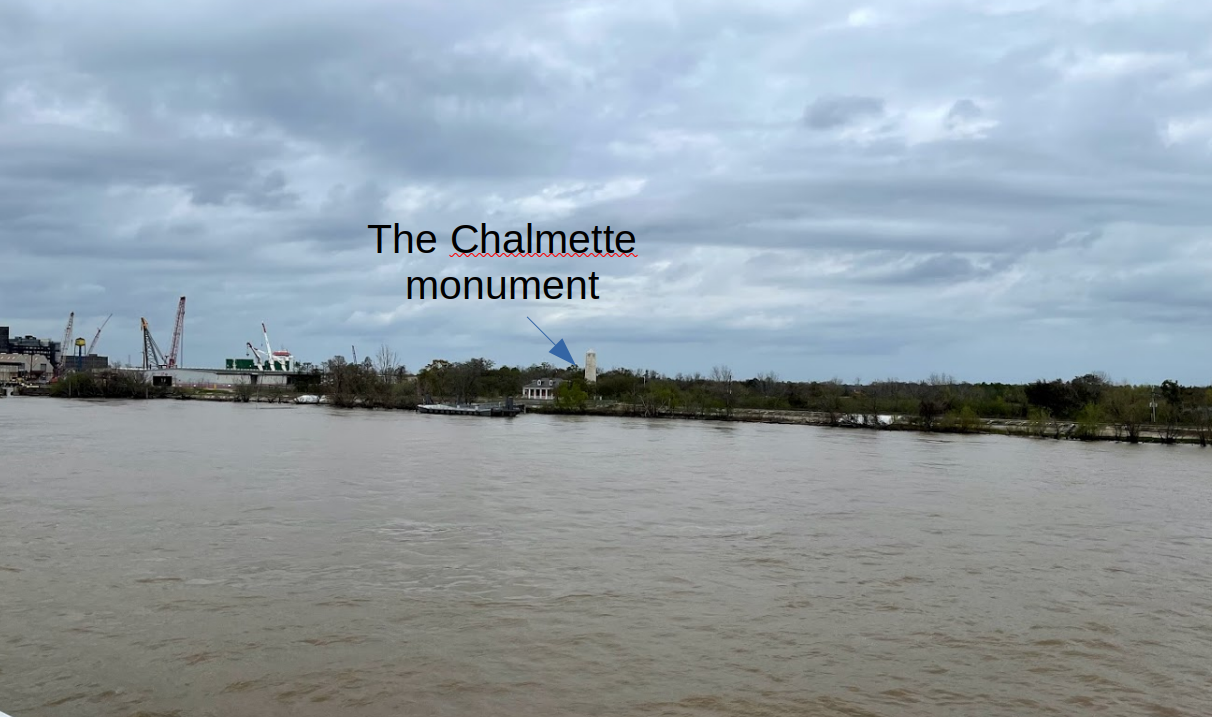
After the boat tour, we drove to the starting location of the swamp tour located along highway 90, a 45 drive from New Orleans. The boat tour ended at 1:30 PM and the swamp tour started at 2:45 PM, so we were cutting it close but it all worked out. The city of New Orleans has done a great job providing a lot of (paid) parking near Jackson square (where the boat tour dropped us), so I was able to park the truck close to where the boat tour ended.
Swamp tour along the Pearl river
The swamp tour involved gliding along the pearl river in a flat bottom boat (appropriately called “Gatorbait” 🙂 ) and learn about the swamp and its natural inhabitants from a local guide (in our case, one with a thick Louisiana accent). The river water may look muddy, but due to the natural filter action provided by the roots of plants that live along the river, the water is actually quite clean. If you fill up a bottle with river water and let it sit for a while, the mud will settle down and the water is almost drinkable.
Here are some annotated pictures and videos.
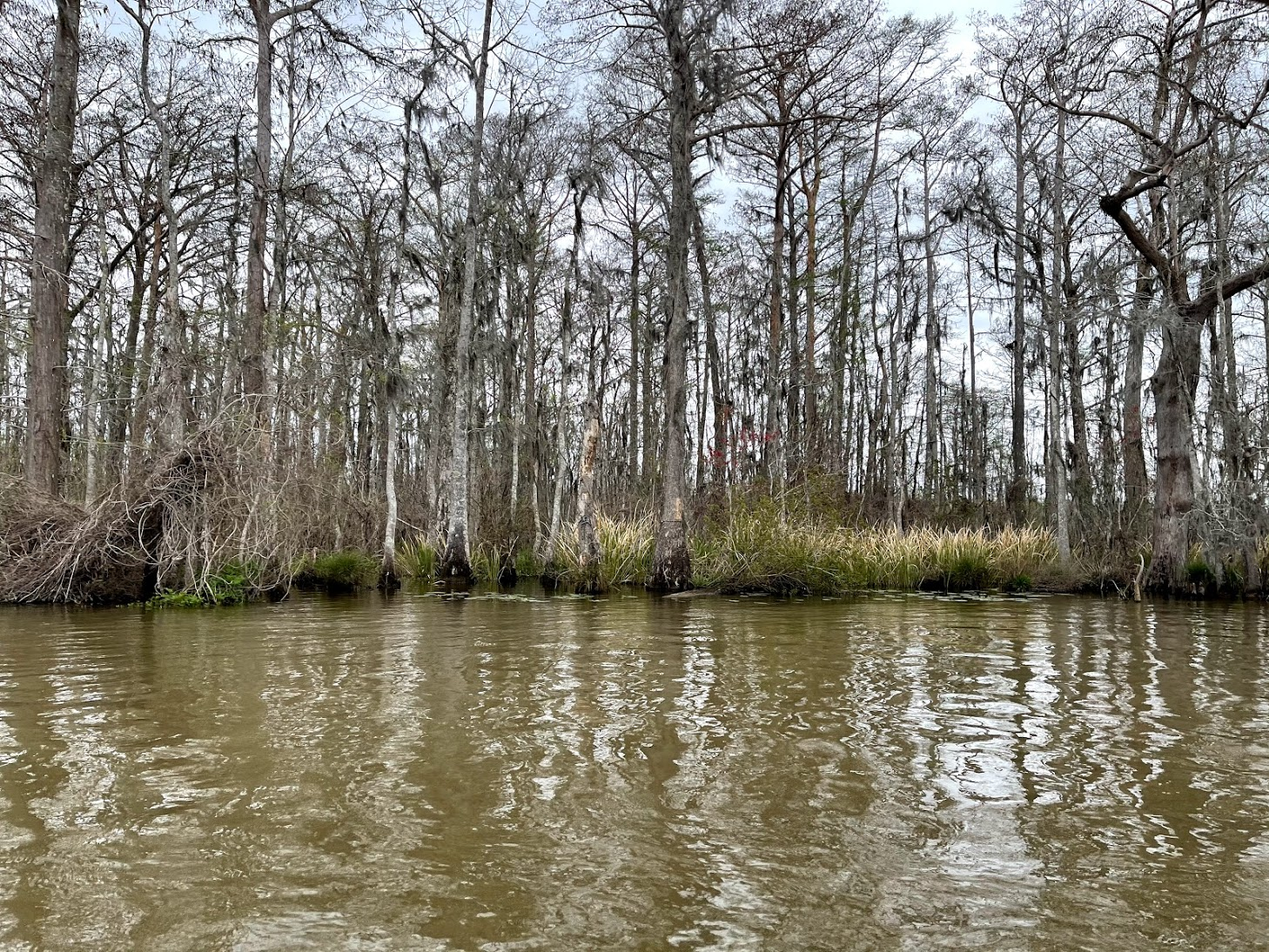
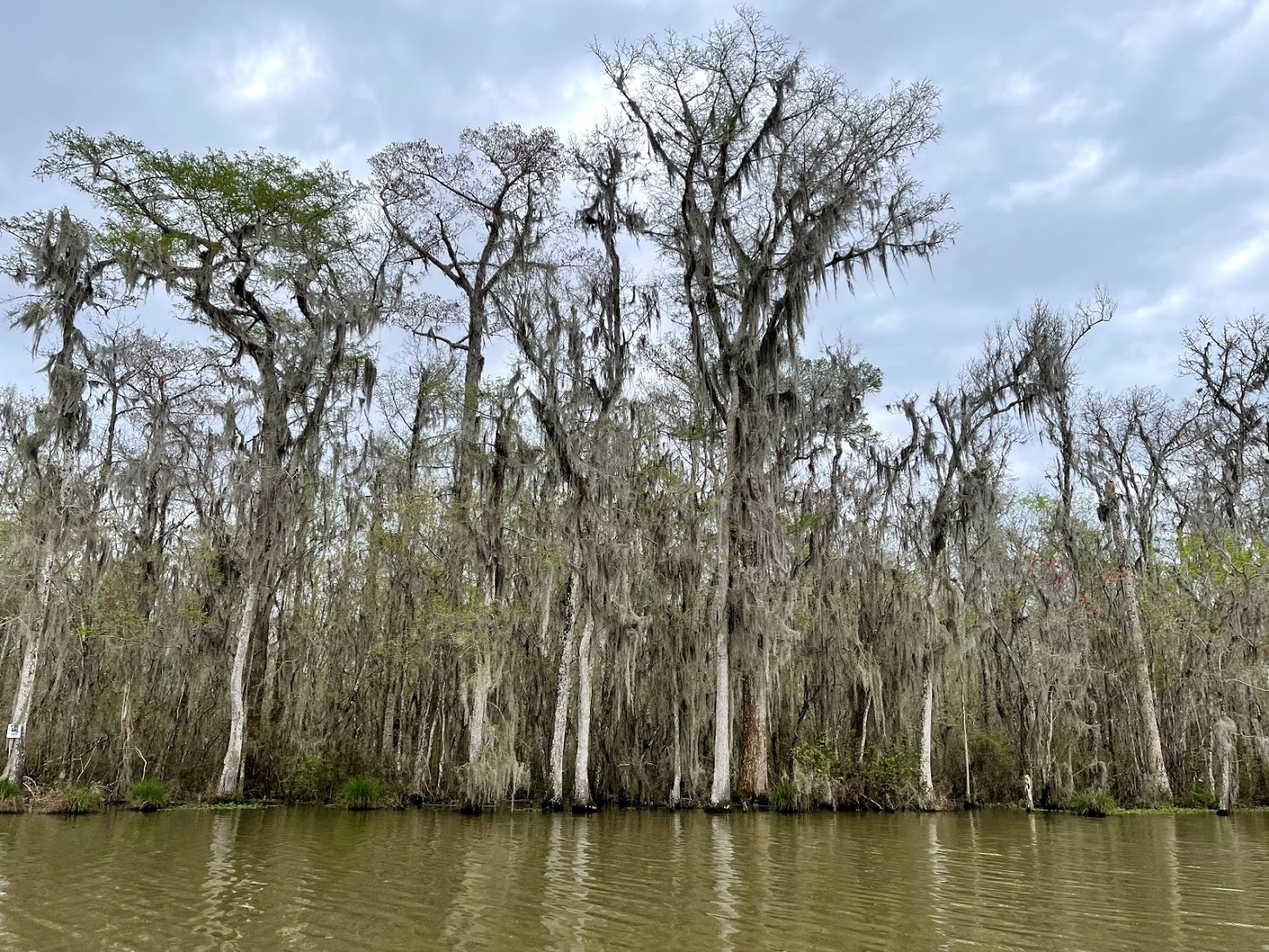
Here’s a video of the swamp from the boat.

Towards the end of our trip, we went down a man-made channel along the river. The water in this channel was warmer because it was not connected with the main flow of the river. There were several alligators in this channel, because alligators, being cold blooded animals, like warm water. Here’s a video of an alligator eating a bait:
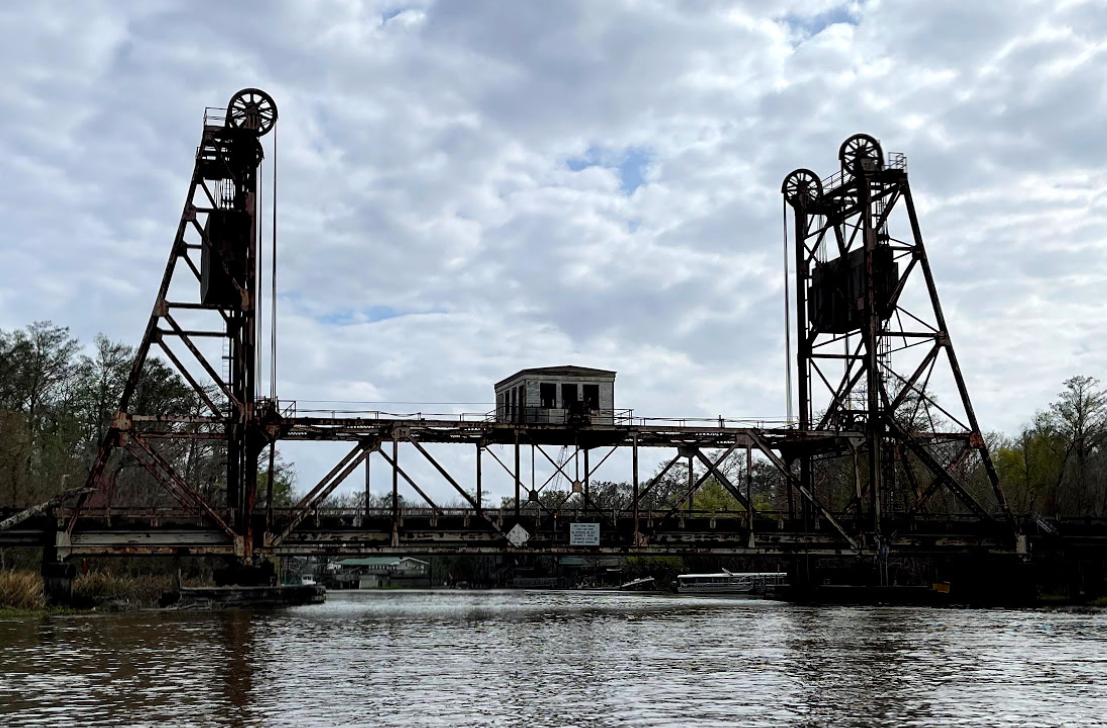
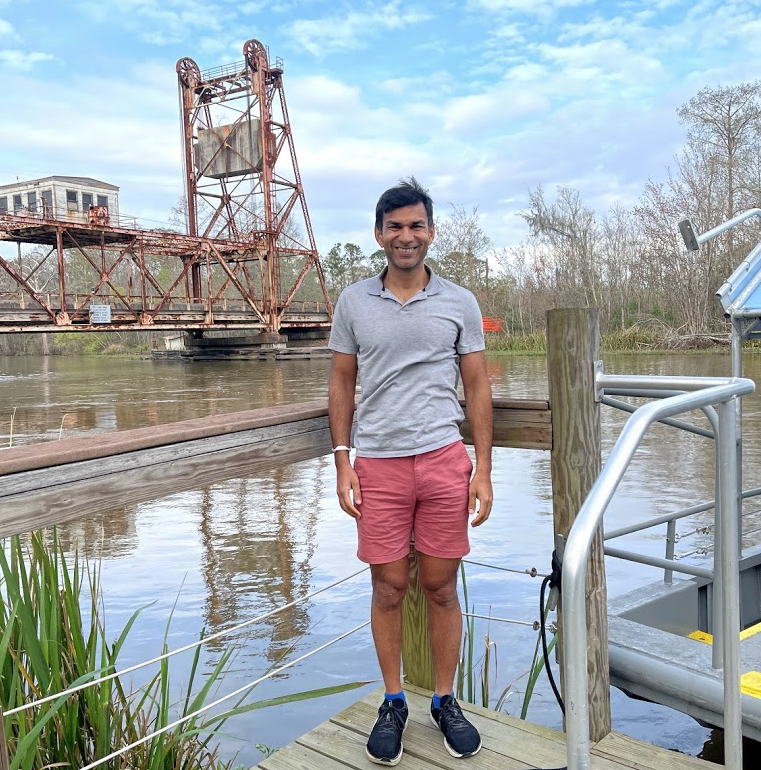
Road trip to Biloxi, MI
After the swamp tour, we decided to drive along the gulf coast to Biloxi, MI, about an hour and half drive from the swamp tour location. The first stop on our trip was Bay St. Louis, a small city located along the gulf coast, on the western coast of the new Bay Bridge (built after the old one was destroyed during hurricane Katrina). We walked along the waterfront, passed by a small concert in a bar where hardly anyone was wearing a mask and had food and drinks at Trapani’s Eatery, a nice 2-story beachfront bar with nice bay views.
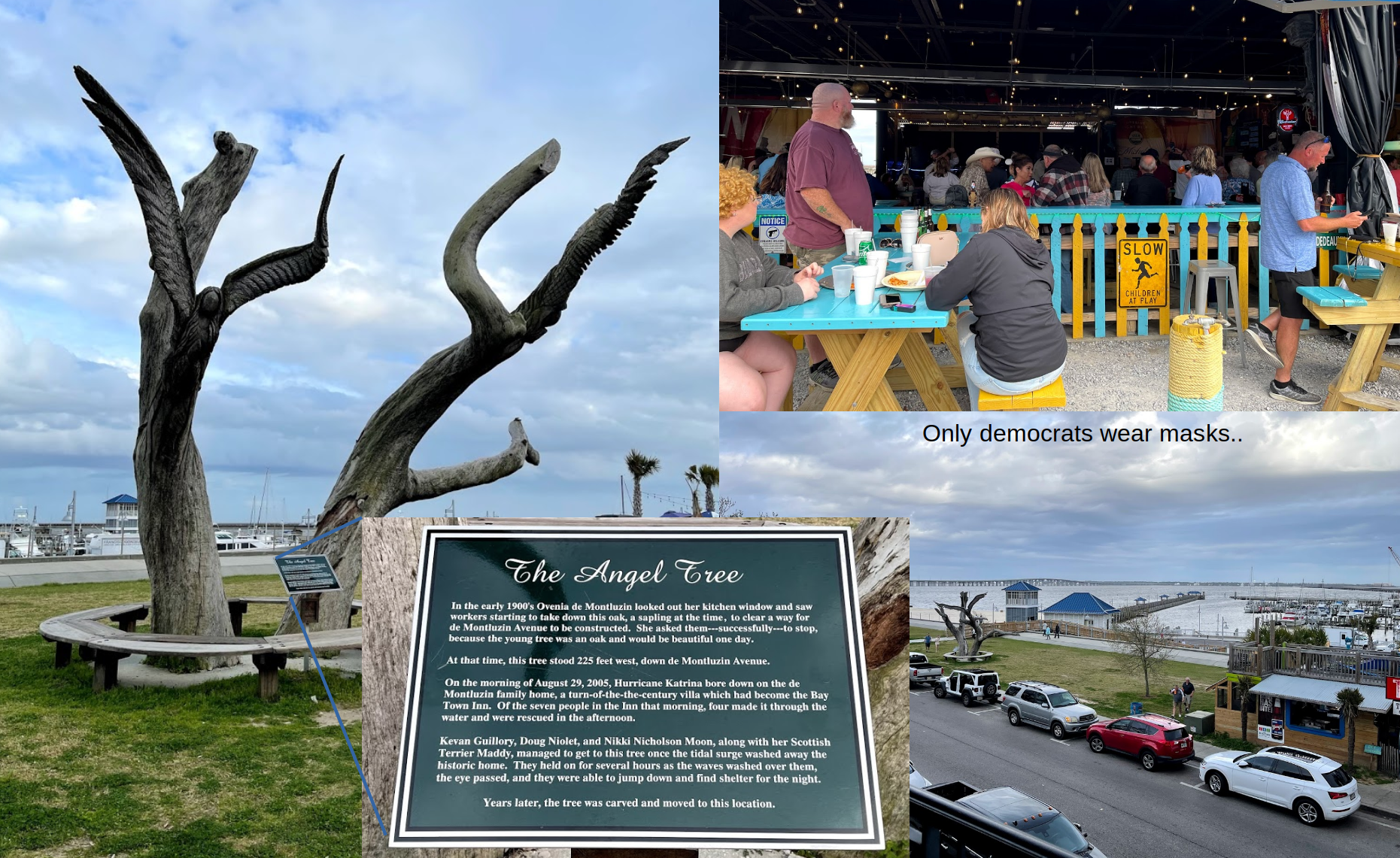
After our brief stop in Bay St. Louis, we crossed the Bay Bridge and continued driving along highway 90 along the gulf coast. The beautiful, plantation style homes dotted along the coast, the white sandy beach and the bay under a cloudy sky in the evening light presented a splendid view.
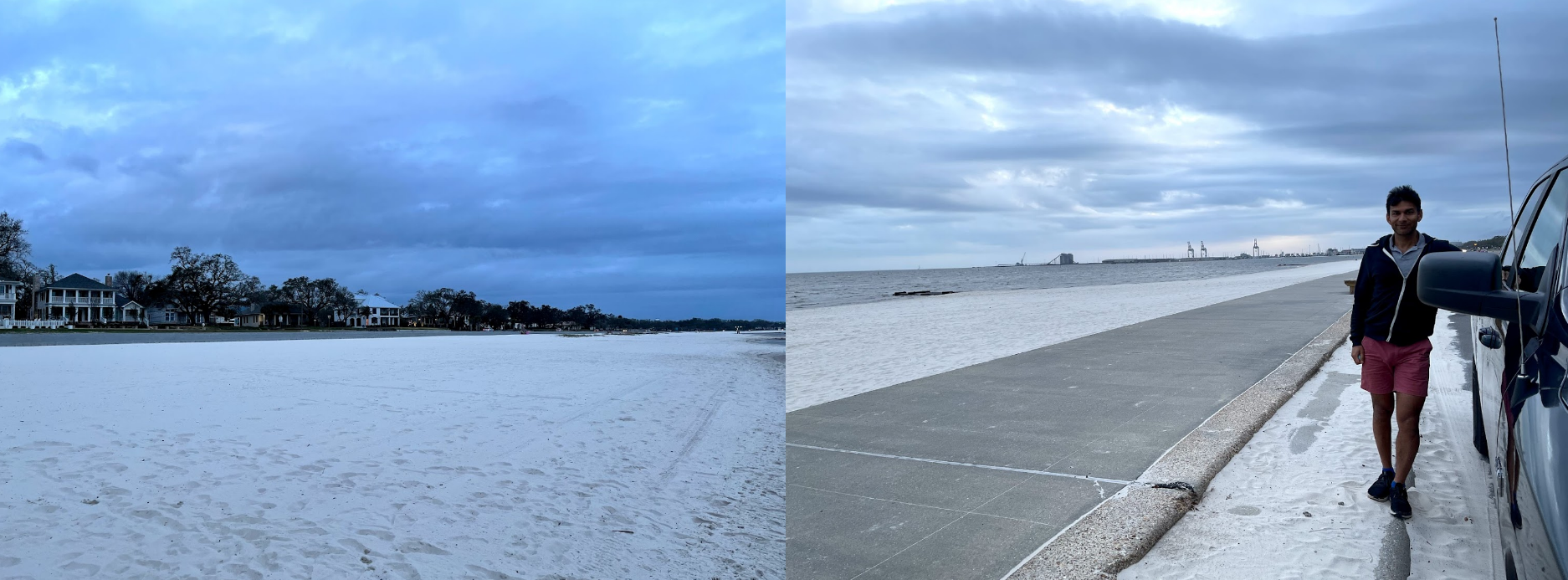
We passed by the town of Gulf Port along the way to Biloxi. With a population of just 67,793, Gulf Port is still the second largest city in MI, after Jackson, the capital. Biloxi used to be the administrative capital of French Louisiana in the 18th century. Now, Biloxi is home to the Keesler Air Force Base and a important center in the resort casino industry. Some of the famous casino complexes the Beau Rivage casino resort, the Hard Rock Hotel and Casino, Casino Magic and Grand Casino. Several of these casinos and hotels were severely damaged during hurricane Katrina, but have since been rebuilt.
We didn’t spend much time in Biloxi. We were tired and hungry and stopped by a restaurant in Gulf Port for dinner on our way back.
Day 3
Our flight back was around noon. We had breakfast at a restaurant in the Irish district and drove to the Tulane university campus, about 3 miles from our hotel. We returned the truck and walked back to our hotel. Along the way, we passed by Lafayette square and saw a statue of Benjamin Franklin.
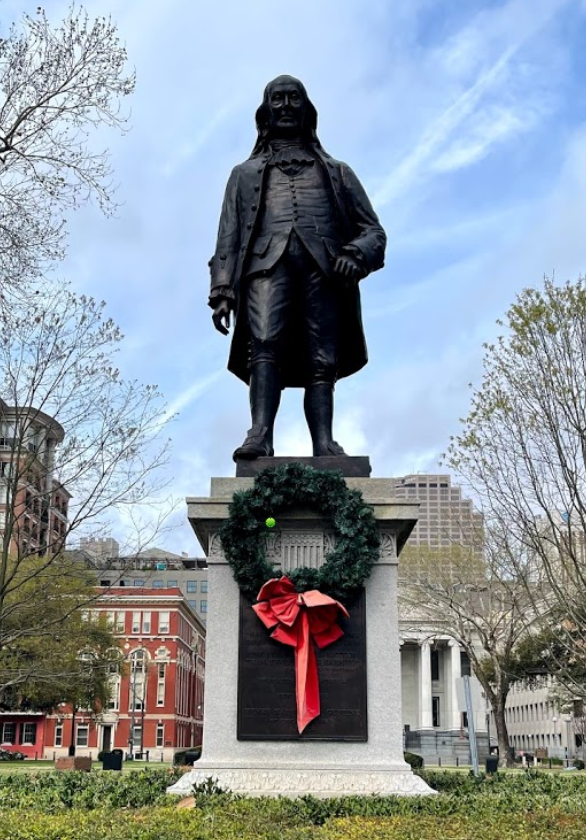
That was it! We had a great time in New Orleans and did a lot in the short time we had there.

Leave a Reply